 By Charlie Gray
By Charlie Gray
Horton Community Farm Coop is a permaculture LAND centre for food growing, wellbeing and community resilience, managing nearly 2 acres at the heart of a 5-acre allotment site in a multi-cultural inner-city area of Bradford. It is a Garden of Sanctuary, having recently received the award in May. The organisation is volunteer and community led with a small worker’s cooperative coordinating activities and managing the site. It is home to many including invertebrates, birds, foxes, bats, newts, hedgehogs, and cats, as well as people of all ages and backgrounds. Many sanctuary seekers have said it feels like home – it does to me too!
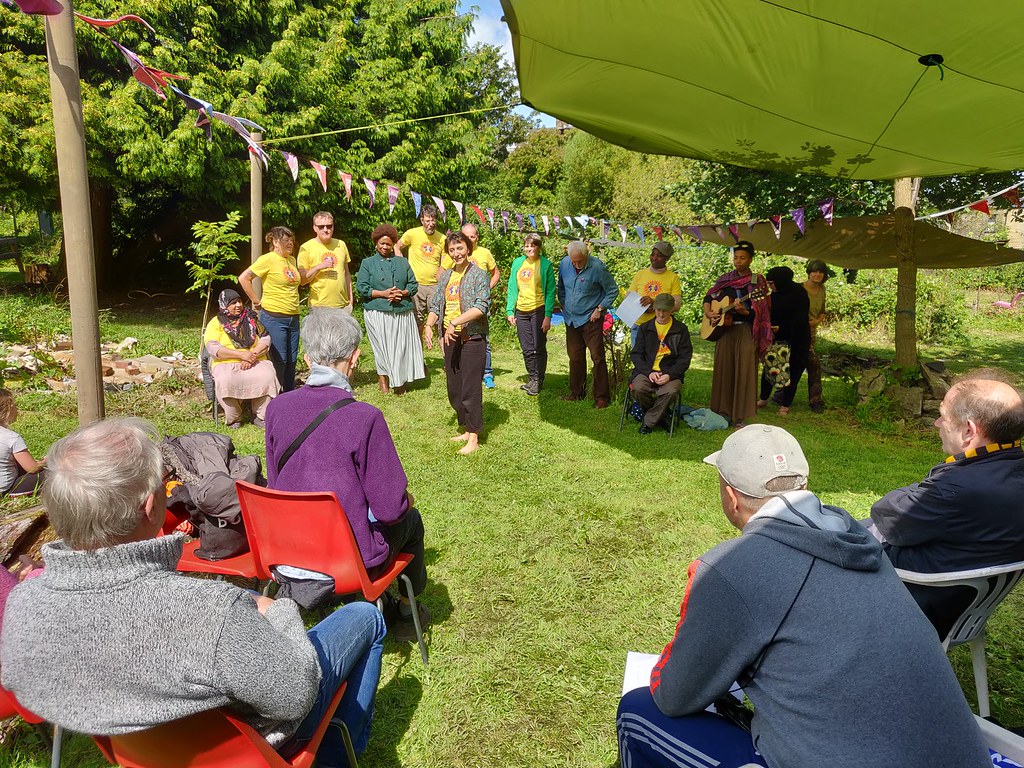 Vision
Vision
The vision was (and still is) to transform a semi-derelict piece of allotment site into an accessible, safe space for all sectors of the community to engage in and connect with education, volunteering, wildlife, therapy and food growing. We do this through co-creating and managing a multi-functional permaculture site with different strands of work, funded projects and activities and we are getting into more of the details now! We do try smaller enterprise initiatives, such as a small share box we used to sell, shares for staff and volunteers and selling small amounts of salad (currently to Hedgehog Organics in Bingley). Whilst I love considering the evolution of the space, I have discovered that whilst we, as workers, are all Directors and have an overview, I tend to be a person who looks out for team and other dynamics, which suited the role of Community and Training Coordinator well.
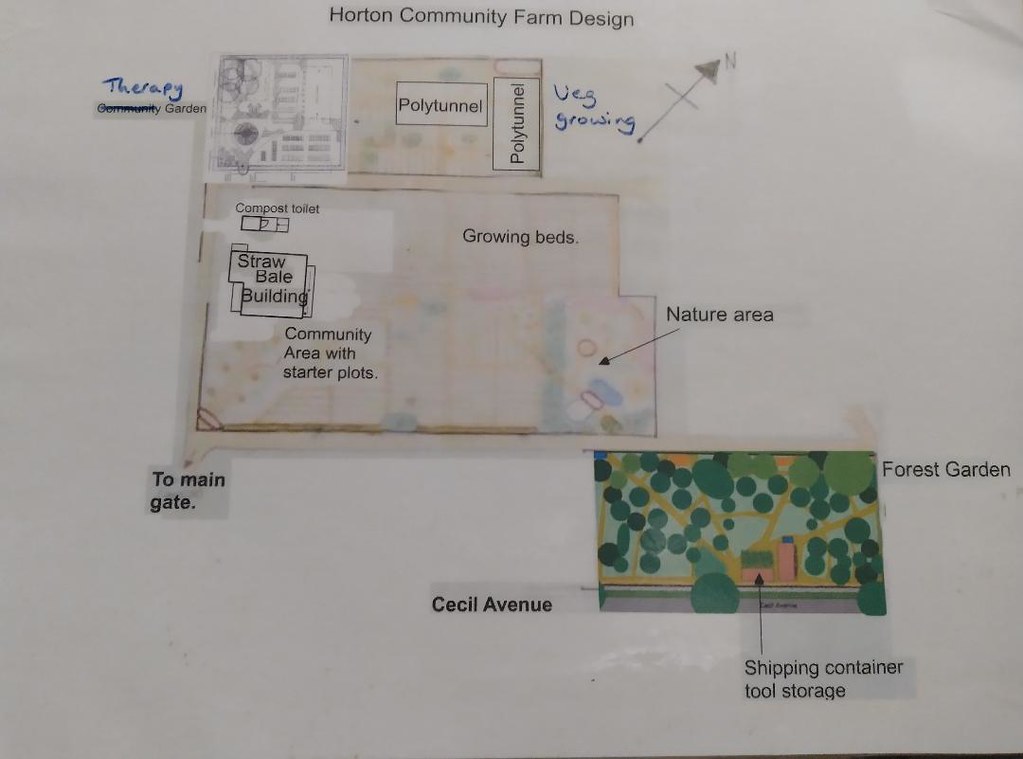 Design Features
Design Features
Intended as a multi-functional bubble design for a wide range of activities the idea was to co-design the details with the community, which has been happening over the last 13 years and continues apace! Perhaps somewhat ironically the area we call the ‘community area’ is the last to be implemented and we have just finished installing the first elements of this space. Several areas of the site including the community area were originally designed at different points by students on the PDC at the University of Bradford, plus the Social and Therapeutic Horticulture Garden designed by a former team member for her diploma in STH. We are intentionally creating something for all ages: Growing Hope for 0-3s, Forest Schools for primary children, involvement in Youth in Permaculture youth exchanges for young people, student internships for uni students, volunteering for 16 upwards, and the Mindfulness Garden for over 50s. We have tried many things including growing mushrooms with young unaccompanied refugees, which was a big hit!
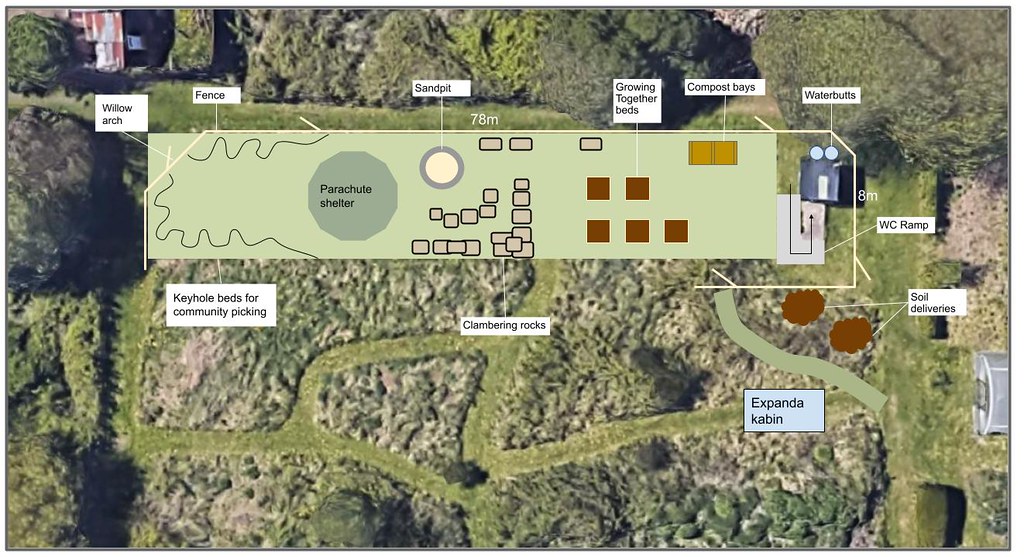
Learning/challenges
Completing my PDC with Leeds Permaculture Network in 2009 I have learnt masses being part of implementing designs and watching things evolve from pattern to detail. We all started as volunteers, and as you’d expect one of the hardest parts of the project was learning to co-operate with others. Whilst designing land is fascinating and ever changing, it’s often the people side of things where a project can and will fail. Edward de Bono’s thinking hats can function as an excellent activity. Trying on different hats is a fun way to see the humour and strength in and embrace the fact we are different. Waiting for Making Local Food Work funding from the National Lottery, knowing money was coming into the project it seemed possible (even likely) this would be a crunch point for us. A 1-minute go-round facilitation method learnt at a Talk Action workshop on facilitating for team dynamics sorted this out in 10 minutes for us, each person agreeing our hours and pay rate!
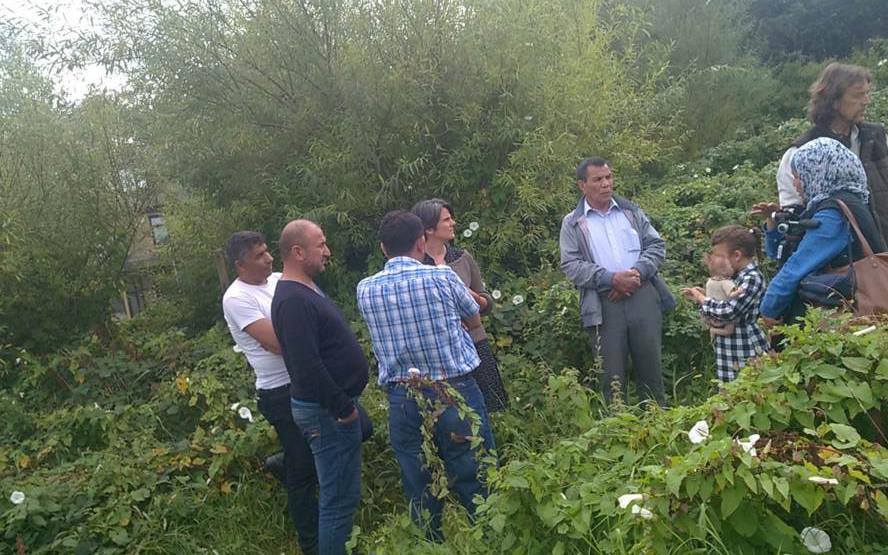
People Care
Having seen a post in 2016 from the Permaculture Association asking if anyone would like to host Nadia Lawton, I jumped at the opportunity! Having such experienced permaculturists visit, we hoped would help us link with the Muslim communities on our doorstep. Nadia spoke about the work they developed in Jordan ‘Greening the desert’, in refugee camps, and in schools from her perspective.
It was amazing to host a well-attended event with both Nadia and Geoff Lawton and for them to visit our site. Whilst we may not be growing perfectly, we are growing more than fruit and veg. As an inner-city project we have hosted people from nearly all countries in the world, group and community dynamics are sometimes complicated, and warmly welcoming people is key. In January 2021 we launched our new Seeds of Hope Seed Library for Bradford which offers solidarity ‘Pay-it-Forward’ membership to ensure everyone can access it and we can afford to run it!
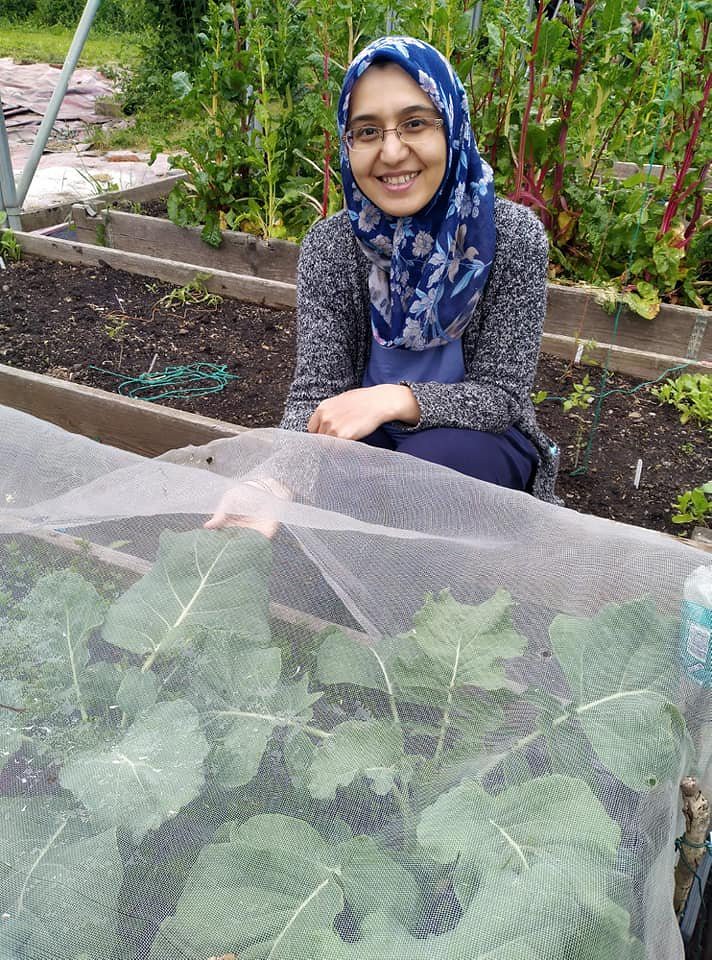 What we say is ‘Start where you’re at, with what you’ve got and do what you can’.
What we say is ‘Start where you’re at, with what you’ve got and do what you can’.
We were privileged to host a pioneer, Nadia, who could communicate in Arabic, (as could Geoff) as a visibly Muslim woman bringing her cultural experience and presence to our community. At the time Bradford had recently become home to Syrian nationals fleeing war there, many of whom we received on our site through partnering with Horton Housing.
Conversations Nadia had with the Syrian refugees were enlightening. They had been struggling to understand what we were doing and why. Until that point, we didn’t have anyone with Arabic or Urdu in our core worker’s coop. Geoff was somewhat critical of our production (understandable) and told us our boundary was too large for the amount of labour currently available. Accepting feedback is key to learning and developing so I accepted his feedback!
Engaging our two student interns with us through the University of Bradford summer experience we revisited the idea of the Community Engagement Strategy, using Looby MacNamara’s Design Web Visioning process, which helped start our Phase 2 visioning to further engage our community. It kick-started a whole year; flyering and door-knocking, and surveying again. We left sheets for the design web phases available for people to feed into on site whilst we worked or had a cuppa together.
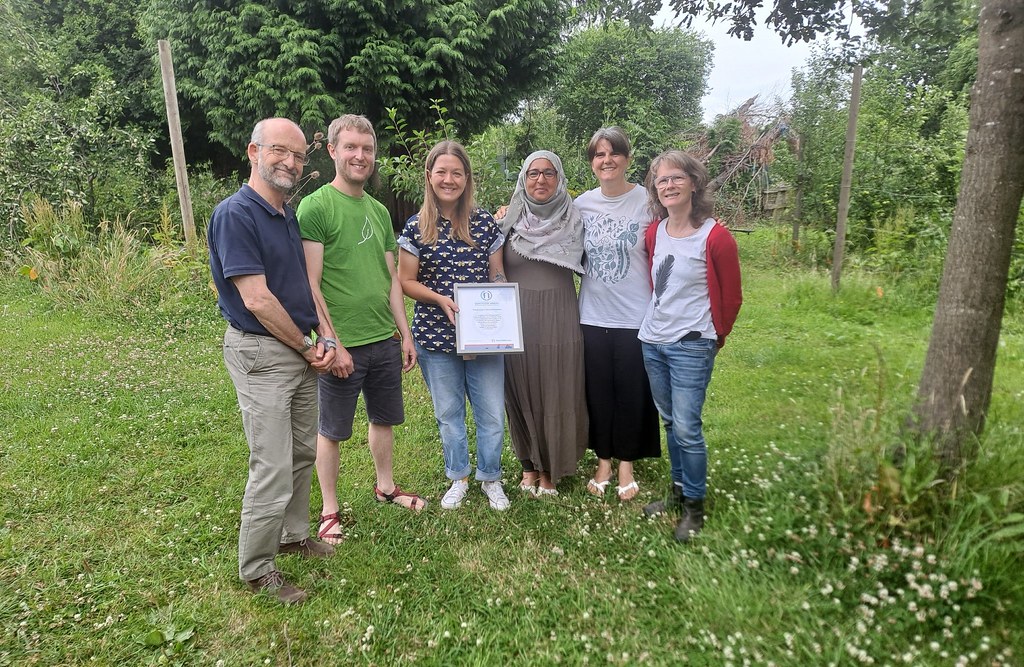 Rather than making our boundary smaller we needed more people to engage and bring each of the areas of our site to life, to co-create and manage it all: veg growing, forest garden, wildlife area, therapy garden and community area.
Rather than making our boundary smaller we needed more people to engage and bring each of the areas of our site to life, to co-create and manage it all: veg growing, forest garden, wildlife area, therapy garden and community area.
Fundraising came up as a point of weakness, so, I developed my fundraising skills. Building on the bubble designs and specific area designs (forest garden, community area) I co-designed, tweaked and successfully fundraised for them. We then implemented numerous projects bringing in many partners, which helped us to see where the energy was/ is. This enabled us to trial new ideas and to fine tune them to meet the needs of the community, building on what we learnt from the visioning. We have also expanded our team. Phase 3, the next phase is all about ‘Design from Pattern to detail’. Although I’m moving on to pastures new, I’m excited to see how the project develops!
Through co-design, implementing practical projects, and coordination of the project as a member of the co-op, I have co-evolved with this wonderful urban oasis for the last 13 years, starting as a volunteer and developing as a human being and permaculture practitioner, and am incredibly grateful for this opportunity!